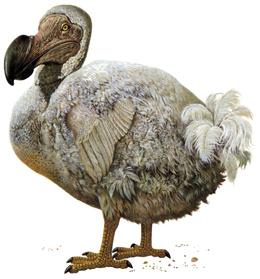TOP STORIES
Ocean Geoeng ineering Scheme May Prove Lethal
ineering Scheme May Prove Lethal
One proposed method to combat climate change is to dump iron in regions of the ocean where the growth of marine phytoplankton -- tiny organisms that grow via CO2-absorbing photosynthesis -- is limited by the amount of iron available.
Adding iron is intended to cause a bloom of phytoplankton growth, sucking up CO2 in the process.
. . . But new findings, published today in the Proceedings of the National Academy of Sciences, show that one type of phytoplankton that thrives under such circumstances makes domoic acid, a potent neurotoxin. This neurotoxin can move up the food chain as other animals eat the phytoplankton, harming sea life. The toxin can kill or weaken birds, fish, sea mammals or even humans who eat seafood that contains the toxin.
15 March 2010
J Marshall
Photo credit: New Jersey Department of Environmental Protection
 Swift nesting sites 'hit by home improvements'
Swift nesting sites 'hit by home improvements'A UK-wide survey of nesting swifts has suggested the declining bird species is at risk from improvement work being undertaken on old houses. The RSPB study of more than 3,400 swift nest sites found nearly 80% were on houses, more than half of which were homes built before 1919.
It is not known why the birds are in decline, but numbers have fallen by almost a third in the past decade.
. . . The birds tend to return to the same nesting sites each year and the RSPB said it was concerned the birds were suffering as a result of demolition and improvement works.
16 March 2010
Photo courtesy of BBC News
Should we be tryi
 ng to save the dodo?
ng to save the dodo?Declaring a species extinct and so not worthy of conservation money is not a trivial matter.
. . . It may sound ridiculous to work out whether conservation dollars should be spent on the dodo (Raphus cucullatus), but the question illustrates a problem for biologists: determining when you should give up on a species.
Cut off conservation money too soon and you could drive a species teetering on the brink into extinction. Keep conserving an animal long after it has last been sighted and you risk wasting money that could keep another endangered animal in the game.
12 March 2010
D Cressey
Photo credit: Science Photo Library
>>> EU postpones by a decade plans to stop extinctions
>>> England's lost wildlife [image gallery]
OTHER WILDLIFE HEALTH RELATED NEWS
Photo credit: J Connolly
 Tough environment no barrier to platypus [includes image gallery]
Tough environment no barrier to platypus [includes image gallery]- To the Antarctic or Brazil for New Feathers: Thin-Billed Prions Select Their Moulting Grounds Individually [cited journal article here]
- Snake infrared detection unravelled [cited journal article here]
Wildlife Poaching and Trafficking
- Potential CITES Trade Ban for Rare Salamander Underscores Wildlife E-Commerce
- Surge in rhino poaching devastates African populations [related news here]
Huh, That's Interesting!
- 300,000 starlings in flight over Denmark [video]
- Earth: Top 5 Superorganisms [video]
- Month-old mammoth mummy carefully preserved
It Ain't All Bad News
WILDLIFE HEALTH RELATED PUBLICATIONS
Browse complete Digest publication library here.
 Evaluation of a rapid serological test for the determination of Mycobacterium bovis infection in badgers (Meles meles) found dead
Evaluation of a rapid serological test for the determination of Mycobacterium bovis infection in badgers (Meles meles) found deadClin Vaccine Immunol. 2010 Mar;17(3):408-11. Epub 2009 Dec 30.
MA Chambers et al.
Virus Shedding and Potential for Interspecies Waterborne Transmission of Highly Pathogenic H5N1 Influenza Virus in Sparrows and Chicken
Journal of Virology. 2010 Apr; 84(7): 3718-3720
HL Forrest et al.
Columba livia as a Sentinel Species for the Assessment of Urban Air Genotoxicity
Archives of Environmental Contamination and Toxicology. 2010; [Epub ahead of print]
M Sicolo et al.
The Link Between Rapid Enigmatic Amphibian Decline and the Globally Emerging Chytrid Fungus
EcoHealth. 2010 Mar 12; [Epub ahead of print]
S Lotters et al.
Rapid polymerase chain reaction diagnosis of white-nose syndrome in bats
J Vet Diagn Invest. 2010 Mar;22(2):224-30.
JM Lorch et al.




